Long noncoding RNA X-inactive specific transcript regulates NLR family pyrin domain containing 3/caspase-1-mediated pyroptosis in diabetic nephropathy
- PMID: 35582664
- PMCID: PMC9052004
- DOI: 10.4239/wjd.v13.i4.358
Long noncoding RNA X-inactive specific transcript regulates NLR family pyrin domain containing 3/caspase-1-mediated pyroptosis in diabetic nephropathy
Abstract
Background: NLRP3-mediated pyroptosis is recognized as an essential modulator of renal disease pathology. Long noncoding RNAs (lncRNAs) are active participators of diabetic nephropathy (DN). X inactive specific transcript (XIST) expression has been reported to be elevated in the serum of DN patients.
Aim: To evaluate the mechanism of lncRNA XIST in renal tubular epithelial cell (RTEC) pyroptosis in DN.
Methods: A DN rat model was established through streptozotocin injection, and XIST was knocked down by tail vein injection of the lentivirus LV sh-XIST. Renal metabolic and biochemical indices were detected, and pathological changes in the renal tissue were assessed. The expression of indicators related to inflammation and pyroptosis was also detected. High glucose (HG) was used to treat HK2 cells, and cell viability and lactate dehydrogenase (LDH) activity were detected after silencing XIST. The subcellular localization and downstream mechanism of XIST were investigated. Finally, a rescue experiment was carried out to verify that XIST regulates NLR family pyrin domain containing 3 (NLRP3)/caspase-1-mediated RTEC pyroptosis through the microRNA-15-5p (miR-15b-5p)/Toll-like receptor 4 (TLR4) axis.
Results: XIST was highly expressed in the DN models. XIST silencing improved renal metabolism and biochemical indices and mitigated renal injury. The expression of inflammation and pyroptosis indicators was significantly increased in DN rats and HG-treated HK2 cells; cell viability was decreased and LDH activity was increased after HG treatment. Silencing XIST inhibited RTEC pyroptosis by inhibiting NLRP3/caspase-1. Mechanistically, XIST sponged miR-15b-5p to regulate TLR4. Silencing XIST inhibited TLR4 by promoting miR-15b-5p. miR-15b-5p inhibition or TLR4 overexpression averted the inhibitory effect of silencing XIST on HG-induced RTEC pyroptosis.
Conclusion: Silencing XIST inhibits TLR4 by upregulating miR-15b-5p and ultimately inhibits renal injury in DN by inhibiting NLRP3/caspase-1-mediated RTEC pyroptosis.
Keywords: Diabetic nephropathy; Long noncoding RNA X-inactive specific transcript; NLR family pyrin domain containing 3/caspase-1 pathway; Pyroptosis; Renal tubular epithelial cell; Toll-like receptor 4; microRNA-15b-5p.
©The Author(s) 2022. Published by Baishideng Publishing Group Inc. All rights reserved.
Conflict of interest statement
Conflict-of-interest statement: For this activity, the authors have no conflicts to declare.
Figures
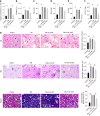
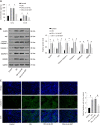


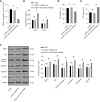
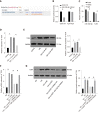
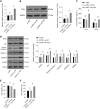

Similar articles
-
Silencing of long noncoding RNA XIST protects against renal interstitial fibrosis in diabetic nephropathy via microRNA-93-5p-mediated inhibition of CDKN1A.Am J Physiol Renal Physiol. 2019 Nov 1;317(5):F1350-F1358. doi: 10.1152/ajprenal.00254.2019. Epub 2019 Sep 23. Am J Physiol Renal Physiol. 2019. PMID: 31545928
-
LncRNA NEAT2 Modulates Pyroptosis of Renal Tubular Cells Induced by High Glucose in Diabetic Nephropathy (DN) by via miR-206 Regulation.Biochem Genet. 2022 Oct;60(5):1733-1747. doi: 10.1007/s10528-021-10164-6. Epub 2022 Jan 27. Biochem Genet. 2022. PMID: 35084640
-
LncRNA X Inactive Specific Transcript Exerts a Protective Effect on High Glucose-Induced Podocytes by Promoting the Podocyte Autophagy via miR-30d-5p/BECN-1 Axis.Int J Endocrinol. 2023 Mar 3;2023:3187846. doi: 10.1155/2023/3187846. eCollection 2023. Int J Endocrinol. 2023. PMID: 36908288 Free PMC article.
-
NLRP3-mediated pyroptosis in diabetic nephropathy.Front Pharmacol. 2022 Oct 11;13:998574. doi: 10.3389/fphar.2022.998574. eCollection 2022. Front Pharmacol. 2022. PMID: 36304156 Free PMC article. Review.
-
Autophagy, Pyroptosis and Ferroptosis are Rising Stars in the Pathogenesis of Diabetic Nephropathy.Diabetes Metab Syndr Obes. 2024 Mar 13;17:1289-1299. doi: 10.2147/DMSO.S450695. eCollection 2024. Diabetes Metab Syndr Obes. 2024. PMID: 38505538 Free PMC article. Review.
Cited by
-
LncRNA CASC15 inhibition relieves renal fibrosis in diabetic nephropathy through down-regulating SP-A by sponging to miR-424.Open Med (Wars). 2023 Jul 11;18(1):20230710. doi: 10.1515/med-2023-0710. eCollection 2023. Open Med (Wars). 2023. PMID: 37465354 Free PMC article.
-
Long non-coding RNA in IgA nephropathy: a comprehensive review.Ren Fail. 2025 Dec;47(1):2495836. doi: 10.1080/0886022X.2025.2495836. Epub 2025 May 6. Ren Fail. 2025. PMID: 40329456 Free PMC article. Review.
-
Bioinformatics analysis and validation of novel biomarkers and competitive endogenous RNA networks involved in pyroptosis in diabetic nephropathy.Sci Rep. 2025 Feb 14;15(1):5530. doi: 10.1038/s41598-025-87854-3. Sci Rep. 2025. PMID: 39953123 Free PMC article.
-
LncRNA XIST: A Breakthrough in Inflammation-related Diseases.Curr Med Chem. 2025;32(22):4543-4555. doi: 10.2174/0109298673270188231122065649. Curr Med Chem. 2025. PMID: 38549534 Review.
-
The Role of Pyroptosis in the Pathogenesis of Kidney Diseases.Kidney Dis (Basel). 2023 Jun 24;9(6):443-458. doi: 10.1159/000531642. eCollection 2023 Dec. Kidney Dis (Basel). 2023. PMID: 38089443 Free PMC article. Review.
References
-
- Eftekhari A, Vahed SZ, Kavetskyy T, Rameshrad M, Jafari S, Chodari L, Hosseiniyan SM, Derakhshankhah H, Ahmadian E, Ardalan M. Cell junction proteins: Crossing the glomerular filtration barrier in diabetic nephropathy. Int J Biol Macromol. 2020;148:475–482. - PubMed
-
- Khan NU, Lin J, Liu X, Li H, Lu W, Zhong Z, Zhang H, Waqas M, Shen L. Insights into predicting diabetic nephropathy using urinary biomarkers. Biochim Biophys Acta Proteins Proteom. 2020;1868:140475. - PubMed
-
- Dong C, Liu S, Cui Y, Guo Q. 12-Lipoxygenase as a key pharmacological target in the pathogenesis of diabetic nephropathy. Eur J Pharmacol. 2020;879:173122. - PubMed
-
- Eisenreich A, Leppert U. Update on the Protective Renal Effects of Metformin in Diabetic Nephropathy. Curr Med Chem. 2017;24:3397–3412. - PubMed
-
- Ni WJ, Ding HH, Tang LQ. Berberine as a promising anti-diabetic nephropathy drug: An analysis of its effects and mechanisms. Eur J Pharmacol. 2015;760:103–112. - PubMed
LinkOut - more resources
Full Text Sources

